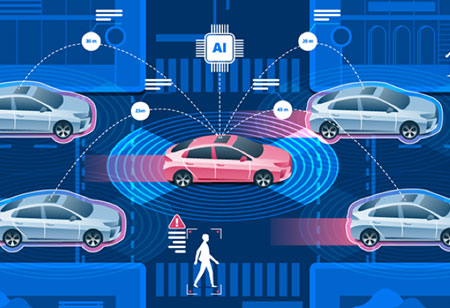Today's cities can deploy connected vehicle systems to improve their traffic management system's effectiveness while reducing the cost and complexity of their infrastructure.
FREMONT. CA: It hasn't been lost on the auto industry that the driving experience is presently going through a quick overhaul. Today, there is an intense focus on how people stay connected with the world outside when they are behind the wheel, while people are still steering wheels. Our vehicles were once our cocoons, insulating us from the world outside. Still, now we demand vehicles that include a host of new experiences and connectivity features—and we're all along for the ride. Connected vehicles are an essential factor in advance of IoT. The applications range from connected entertainment systems that connect with the driver's mobile phone to Internet-connected vehicles with bi-directional communication with other vehicles, devices, and city intersections.
Connected vehicles connect to a network to allow bi-directional communications between vehicles and other vehicles, mobile devices, and infrastructure to trigger communications and events. In the instance of city traffic and intersection safety, those communications can allow vehicles outfitted with connected vehicle technology to continuously interact with their locations and get near real-time information that triggers an automated response. With vehicles becoming sophisticated and more connected, vehicles today connect to sophisticated, high-bandwidth networks to allow a range of capabilities.
GPS is an example of a technology that helps connected vehicles. The GPS network enables a car to plan a route, taking into account present traffic conditions to avoid traffic jams. The sophistication of GPS and its usage by connected vehicles will continue to emerge with lower-latency networks and the advance of connected vehicle technology. However, autonomous vehicles do not safely guide difficult intersections and obstacle-ridden areas in cities. With enough sensors and the high-speed, low-latency communications that 5G networks will offer, the future IoT car can safely navigate these complex zones.
With Gigabit Ethernet speeds, multiple ports, and compute power, transportation routers are IoT solutions that offer the needed speed, computing power, and connectivity to handle the full range of devices at work today's complicated traffic management scenarios while allowing for the connected vehicle future.

 Copyright © 2025 AutoTech Outlook. All Rights Reserved | Privacy Policy | Subscribe | Sitemap | About us | Feedback Policy | Editorial Policy
Copyright © 2025 AutoTech Outlook. All Rights Reserved | Privacy Policy | Subscribe | Sitemap | About us | Feedback Policy | Editorial Policy